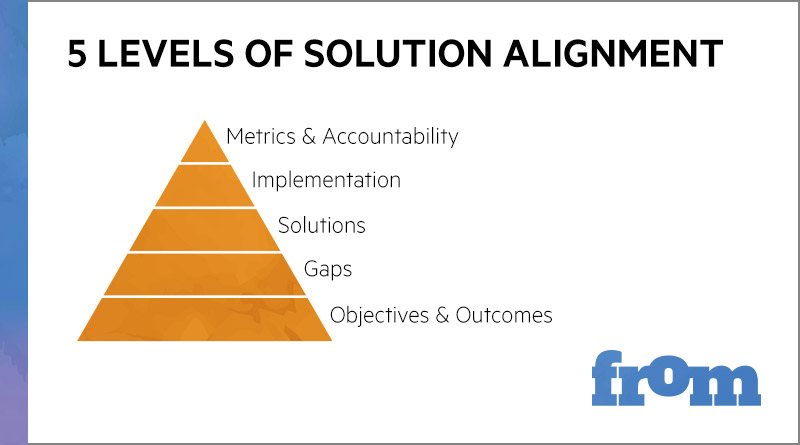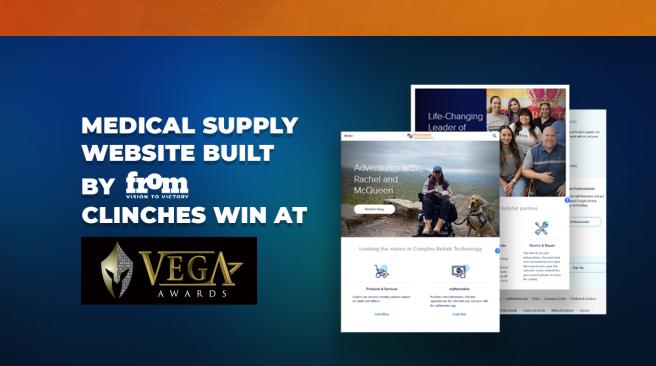Insights | By Howard Tiersky
Product Development: How to Get Your Team on the Same Page
Innovation projects almost always need teams of people to participate in conceiving, designing, building, testing, marketing, and selling a solution.
But at the start, innovation can seem wide open and everyone may have a different perspective about what needs to be done. One group may want to change the form of the product, while another wants to focus on its features and yet another on its pricing model or distribution methods.
So how do you figure out the right answer, get everyone on the same page, and focus on a common innovation goal? At FROM, we use a specific model to approach the process of identifying the most relevant opportunity areas for innovation and to build group consensus around the best approach. You'll have to adapt it to your situation, but the model should provide a good starting framework.
Disagreement is not necessarily bad. The process of teams debating alternatives and working through solutions, if executed in a positive manner, is great for getting both a superior outcome as well as getting teams really invested in the results!
The Solution Alignment Pyramid
- Level One: Objective or Outcomes
You need to start with a mission. What is the outcome your business is seeking? If the team has been asked to innovate, to what end goal? Is it to grow total market share, penetrate new markets, or respond to a competitive offer?
- Level Two: Gaps
If everything were 100% perfect already, you wouldn’t need to innovate and achieve the outcomes defined by the first level of the pyramid. Fortunately, this is rarely an issue; that doesn't mean everyone on the team agrees what the problem is, or what specific problems should be targeted through innovation. That's where the second level of the pyramid comes in. What problems are you trying to solve through your innovation? If you can agree on the outcome, then you can figure out what’s preventing that outcome (i.e., the gap).

5 Levels of Solution Alignment Pyramid
- Level Three: Solutions
Even if you’ve agreed on a problem, that doesn't necessarily mean you agree on how to solve the problem. There are often multiple possibilities, and alignment around solutions is key to making the best choices and gaining consensus around how you’ll solve the problem.
- Level Four: Implementation
Your team might all agree on the solution, but maybe not how to actually accomplish it. That’s where aligning around implementation comes in.
- Level Five: Metrics and Analytics
How will you define and measure success? Who will be accountable for monitoring and reporting on the success of the decisions you’ve made?
If you have a group that isn't aligned about what direction to take your innovation efforts, you should try to figure out about which level they’re disagreeing. Do they agree on the goal or objective, but disagree on where there are gaps in the current market? Does everyone agree that what's needed is a product that lasts longer, but they disagree on what formulation will achieve that goal? (That's a solution disagreement.) Does everyone agree on the basic solution, but disagree on whether it should be manufactured internally or outsourced? (That's an implementation disagreement.) Do you agree on the product, but disagree whether the product line profitability or market share should be the ultimate measure of success? (That’s a metrics and accountability disagreement.)
By the way, disagreement is not necessarily bad. The process of teams debating alternatives and working through solutions, if executed in a positive manner, is great for getting both a superior outcome as well as getting teams really invested in the results!
The Solution Alignment Pyramid is meant to help make that process a bit more structured and productive, and each level is dependent on another. A dispute about manufacturing before a solution agreement is probably premature, and it’s probably better to focus on outcome agreement before deciding which gaps to go after. Move through each level of the pyramid, from bottom to top, to make sure that alignments are happening in the correct order for maximum benefit.











